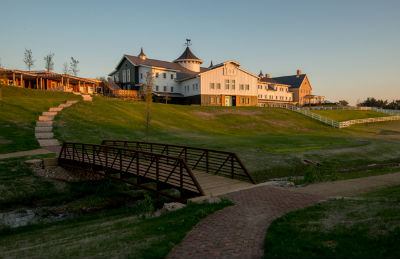Government Grants
Business Grants
Home Owner Programs
Federal Programs
About Us
Prediction and Early Identification of Harmful Algal Bloom (HABs) in Riverine Systems
Aquatic nuisance species, including harmful algae, impact freshwater lakes and rivers, infrastructure, operations, and associated resources across the nation.
HABs have resulted in recreational closures, public health concerns, and billions of dollars in economic impacts.
HABs are increasing in frequency and duration, resulting in environmental, socioeconomic, human and ecological health concerns.
Cost-effective and scalable technologies for early HAB detection, prediction, and management are needed to reduce HAB frequency and severity.
Riverine HABs, in particular, can span hundreds of miles, last for weeks, and cause significant damages.
Prediction and early identification of riverine HABs is critical to enable effective response and management actions.
This project will establish an interdisciplinary collaboration between USACE and recipient(s) to accomplish numbered objectives below.
Successful proposals will also (a) clearly identify question(s) the proposed project will seek to answer (i.e., project technical objectives); (b) clearly describe the tasks and data required to answer those question(s) (i.e., data quality objectives); and (c) describe envisioned project deliverables by task and by year.
Proposals that demonstrate intent to maximize use of existing federal and state HAB programs, activities, and data are encouraged.
Successful proposals will identify quantitative and qualitative success criteria for each project task.
This project will accomplish the following.
1) Research supported by this program must be scalable and transferable to other systems.
Therefore, please identify primary and secondary riverine systems for this project.
The primary riverine system will be the focus – why was this riverine system selected as the primary? The secondary riverine system will be used to provide context for interpreting the approach and results obtained for the primary system.
For example, are the insights and results obtained for the primary system applicable to the secondary system? What features and considerations need to be accounted for in applying the approach to other systems? We strongly encourage engagement with tribal, federal, state, and/or local partners who have expert knowledge pertaining to the primary and secondary riverine systems and HABs in all key phases of project planning, execution, and in preparation of final deliverables.
Please identify stakeholders and partners that would be engaged during the course of the project in your pre-proposal.
2) Develop a systematic approach for early HAB detection.
This systematic approach should consider monitoring methods, spatial distribution of the monitoring network, quantitative framework required to interpret monitoring results (ideally in real-time), and considering uncertainties and information needed to effectively communicate outcomes to the public.
Note that near-term monitoring data such as from the field, in situ sensors or remote sensing (real-time or hours to days after occurrence) are aligned with early warning of what is happening (or has just happened), whereas models are predictions of what could happen.
Both early warning capabilities and early warning coupled with prediction capabilities are of interest.
Please take care to address early warning and prediction activities distinctly in pre-proposal.
3) Demonstrate the systematic approach for early HAB detection identified in item 2 at field scale; involves gathering new data and making maximal use of existing federal and state data.
Do demonstration results suggest areas or time where prevention activities could reduce the intensity or scale of the bloom? Please note any such useful observations or ideas that emerge from the demonstration and feature them in section of report.
4) Complete a draft and final study report summarizing outcome of item 3. Include section identifying applications of the framework should the demonstration identify areas where actions could reduce HAB severity or intensity.
HAB prevention is not the primary objective of this call; however, should demonstration of the prediction and early identification approach suggest areas where preventative actions could be helpful, please document this in report.
Prepare final framework for prediction and early identification of riverine HABs; final framework incorporates final case study identified in item 4. Data and results obtained are presented for the primary riverine system; transferability and considerations required to apply the framework to the secondary system are provided as well.
Includes complementary data publication so that end-users can easily access data generated by this project; data collected during project must be uploaded to water quality portal (https://www.waterqualitydata.us/).
HABs have resulted in recreational closures, public health concerns, and billions of dollars in economic impacts.
HABs are increasing in frequency and duration, resulting in environmental, socioeconomic, human and ecological health concerns.
Cost-effective and scalable technologies for early HAB detection, prediction, and management are needed to reduce HAB frequency and severity.
Riverine HABs, in particular, can span hundreds of miles, last for weeks, and cause significant damages.
Prediction and early identification of riverine HABs is critical to enable effective response and management actions.
This project will establish an interdisciplinary collaboration between USACE and recipient(s) to accomplish numbered objectives below.
Successful proposals will also (a) clearly identify question(s) the proposed project will seek to answer (i.e., project technical objectives); (b) clearly describe the tasks and data required to answer those question(s) (i.e., data quality objectives); and (c) describe envisioned project deliverables by task and by year.
Proposals that demonstrate intent to maximize use of existing federal and state HAB programs, activities, and data are encouraged.
Successful proposals will identify quantitative and qualitative success criteria for each project task.
This project will accomplish the following.
1) Research supported by this program must be scalable and transferable to other systems.
Therefore, please identify primary and secondary riverine systems for this project.
The primary riverine system will be the focus – why was this riverine system selected as the primary? The secondary riverine system will be used to provide context for interpreting the approach and results obtained for the primary system.
For example, are the insights and results obtained for the primary system applicable to the secondary system? What features and considerations need to be accounted for in applying the approach to other systems? We strongly encourage engagement with tribal, federal, state, and/or local partners who have expert knowledge pertaining to the primary and secondary riverine systems and HABs in all key phases of project planning, execution, and in preparation of final deliverables.
Please identify stakeholders and partners that would be engaged during the course of the project in your pre-proposal.
2) Develop a systematic approach for early HAB detection.
This systematic approach should consider monitoring methods, spatial distribution of the monitoring network, quantitative framework required to interpret monitoring results (ideally in real-time), and considering uncertainties and information needed to effectively communicate outcomes to the public.
Note that near-term monitoring data such as from the field, in situ sensors or remote sensing (real-time or hours to days after occurrence) are aligned with early warning of what is happening (or has just happened), whereas models are predictions of what could happen.
Both early warning capabilities and early warning coupled with prediction capabilities are of interest.
Please take care to address early warning and prediction activities distinctly in pre-proposal.
3) Demonstrate the systematic approach for early HAB detection identified in item 2 at field scale; involves gathering new data and making maximal use of existing federal and state data.
Do demonstration results suggest areas or time where prevention activities could reduce the intensity or scale of the bloom? Please note any such useful observations or ideas that emerge from the demonstration and feature them in section of report.
4) Complete a draft and final study report summarizing outcome of item 3. Include section identifying applications of the framework should the demonstration identify areas where actions could reduce HAB severity or intensity.
HAB prevention is not the primary objective of this call; however, should demonstration of the prediction and early identification approach suggest areas where preventative actions could be helpful, please document this in report.
Prepare final framework for prediction and early identification of riverine HABs; final framework incorporates final case study identified in item 4. Data and results obtained are presented for the primary riverine system; transferability and considerations required to apply the framework to the secondary system are provided as well.
Includes complementary data publication so that end-users can easily access data generated by this project; data collected during project must be uploaded to water quality portal (https://www.waterqualitydata.us/).
Related Programs
Basic, Applied, and Advanced Research in Science and Engineering
Department Of Defense
Agency: Department of Defense
Office: Engineer Research and Development Center
Estimated Funding: $3,000,000
Office: Engineer Research and Development Center
Estimated Funding: $3,000,000
Obtain Full Opportunity Text:
None.
Additional Information of Eligibility:
This opportunity is restricted to non-federal partners of the Southern Appalachian Mountains and the Piedmont-South Atlantic Coast Cooperative Ecosystems Studies Units (CESUs).
Full Opportunity Web Address:
None.
Contact:
Agency Email Description:
Kisha M. Craig
Agency Email:
Date Posted:
2024-07-18
Application Due Date:
Archive Date:
2024-10-16
Social Entrepreneurship
Spotlight
Green Coworking Space Expands To Serve Denver’s Green Movement

The country’s first green coworking space, Green Spaces, is a hub for green and socially conscious businesses in Denver to work and connect with each other.

